“We will die, but not surrender!” The battle for Petropavlovsk
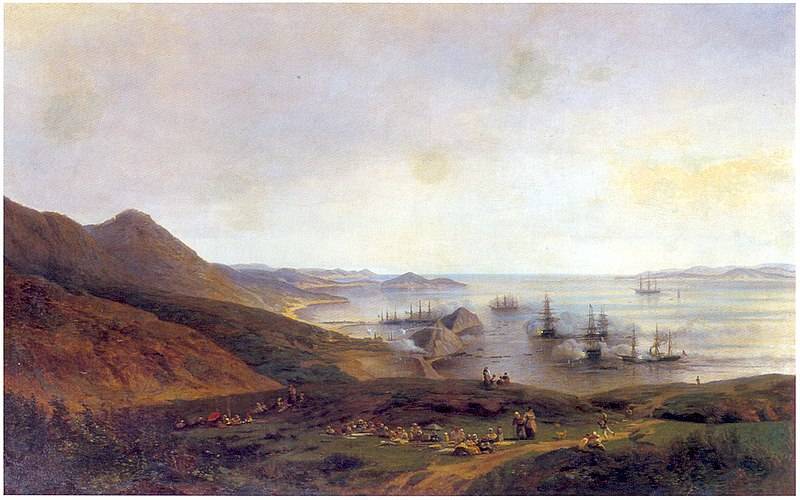
The general situation in the Far East
Britain built a global empire. Therefore, the northern part of the Pacific Ocean and the Far East also entered into her sphere of interests. But in order to achieve complete dominance in the Asia-Pacific region, it was necessary to defeat the Russian empire. The Russians owned a significant part of the Far East, Kamchatka and Russian America.
Unfortunately, Europocentrism prevailed in St. Petersburg. Almost all of Russia's attention and forces were concentrated on European affairs. The development of the eastern regions was mainly due to asceticism, the personal contribution of a number of researchers, industrialists and statesmen. Dozens of years of peace were not used for the development of the Russian Far East, its active settlement, the creation of industrial potential there, strong military bases that could protect our possessions and create the potential for further expansion. So, at this time, the Russians had every opportunity to expand their sphere of influence in the Asia-Pacific region (America, Korea, etc.).
It is not surprising that the Eastern (Crimean) war was a serious challenge for the Russian Empire. There was a threat of losing part of the eastern possessions. The British tried to push the Russians inside the continent. In 1840 - 1842 years. the British easily defeated China in the First Opium War. Huge Chinese civilization became the semi-colony of the West. Now, according to England, the time has come to “put in place” the Russians, to throw them out of the Far East. Russian Pacific possessions were threatened. Already on the eve of the war, the British were conducting reconnaissance. English ships came to Petropavlovsk.
The most far-sighted Russian figures saw this threat. In 1847, Count Nikolai Muravyov was appointed Governor-General of Eastern Siberia. He drew attention to the growing threat of an attack by foreigners, primarily the British, in the Amur Region and Kamchatka. Muravyov (Muravyov-Amursky) played an outstanding role in the development of the Far East. The count added the mouth of the Amur to the empire, and on his initiative they created new settlements. At his request, Nicholas I allowed to produce troops on Amur. In the spring of 1854, the first rafting of troops took place, a year later the second. Together with the troops, the first settlers arrived. This was done literally at the last moment. The Russian presence in the Far East was strengthened.
In 1848, Muravyov decided to strengthen the defense of Petropavlovsk. In the summer of 1849, the Governor-General on the Irtysh transport arrived at the Peter and Paul Port. Muravyov inspected the area and outlined places for the construction of new batteries. He proposed to put batteries on the Signal Cape, on the Peter and Paul Spit and near Lake Kultushnogo. In a letter to the Minister of Internal Affairs Perovsky, Muravyov noted that the Avacha Bay needs to be strengthened, since even a weak enemy fleet can capture it.
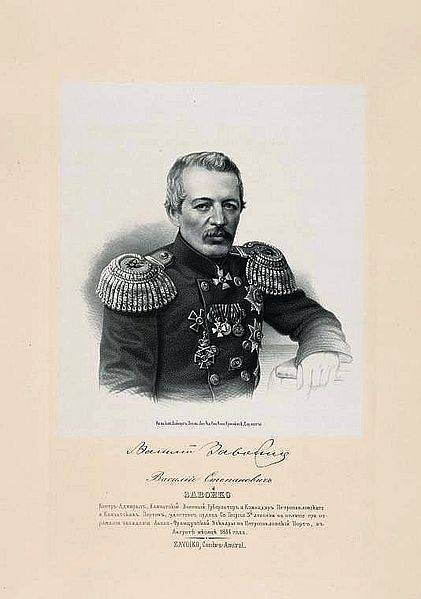
Zavoiko. Defense preparation
Muravyov appointed the new governor of Kamchatka. They became an energetic manager, Major General Vasily Zavoyko. He had experience in the Black Sea and Baltic. navy, bravely fought in the Navarino naval battle. In the 1830s he made two round-the-world voyages on the Amur transport from Kronshtadt to Kamchatka and the ship of the Russian-American company (RAC) Nikolay from Kronshtadt to Russian America. He served in the RAC, was the head of the Okhotsk trading post, in the 1840s Zavoiko examined the entire eastern coast of the Sea of Okhotsk and the Shangar Islands, arranged the port of Ayan.
Zavoiko took active measures to develop Kamchatka and its defense. The Okhotsk artisan company and the Peter and Paul company were united in the 46th naval crew. The Okhotsk Naval School, which became the Petropavlovsk Naval School, is being transferred to Petropavlovsk. At the Nizhnekamchatka shipyard they are building the Anadyr schooner, the Kamchadal and Aleut bots. The city has grown significantly: if in the Peter and Paul Port in 1848 there were only 370 inhabitants, then in 1854 there were already 1 594. Prior to the war, several dozen different new buildings were built in Petropavlovsk, port facilities were reconstructed.
At the end of May 1854, Petropavlovsk was notified of the beginning of the war. Zavoyko expressed readiness to “fight to the last drop of blood”. However, the port had weak defensive capabilities for the crane: the garrison was only 231 people with several old cannons. The governor requested reinforcements and guns, and began to prepare batteries in the hope of the guns coming soon. Rifle and fire units were formed from volunteers. Fortunately for the defenders of the city, unexpected reinforcements arrived in July. Having completed the voyage, the 58-gun frigate "Aurora" went under the command of Captain-Lieutenant Ivan Nikolaevich Izylmetiev. The frigate was sent to strengthen Vice Admiral Putyatin’s Pacific Squadron. Due to scurvy, which hit most of the crew, and a shortage of drinking water, the ship entered the Peter and Paul Port. Upon learning of the threat of attack, Izilmetyev agreed to stay in Petropavlovsk.
The arrival of the frigate significantly increased the defense of the port: part of the crew was transferred ashore and created a reserve of the garrison, half of the guns were removed for coastal batteries. Also on 24 of July (5 of August) of 1854 of the year the long-awaited reinforcements arrived in Petropavlovsk: military transport Dvina. The ship brought 350 soldiers of the Siberian Line Battalion under the command of Captain A.P. Arbuzov, 2 two-pound bomb guns and 14 36-pound guns. The military engineer Lieutenant Konstantin Mrovinsky also arrived. He led the construction of coastal fortifications. Thus, the Peter and Paul Garrison grew to 1 thousand people (one third on ships, one third on coastal fortifications and a part in reserve). Taking into account dozens of volunteers, the garrison numbered over 1 thousand soldiers.
Almost the entire population of the city and its environs participated in the preparation of the defense - about 1600 people. The construction of seven batteries was carried out around the clock for almost two months. People prepared the sites for the guns, removed guns and ammunition from the ships, dragged and installed them. The ships were anchored on the left sides to the exit from the harbor, the guns from the right sides were removed for coastal batteries. The harbor entrance was closed with floating barriers (booms). Batteries protected the horseshoe port. On the left side, on the rocks of Cape Signal there was a battery number 1 (“Signal”): 64 man, 2 mortars and 3 6-pound guns under the command of Lieutenant Gavrilov. She protected the entrance to the internal raid. Also on the left flank, on the isthmus between the Signal Hill and Nikolskaya Hill, was the battery number 3 (“Isthmus”): 51 people and 5 24-pound guns. At the northern end of the Nikolskaya Sopka, on the very shore, a battery No. 7 was built to repel a possible enemy landing from the rear. There were 49 people here with 5 24-pound guns. Another battery was built on the fold of an imaginary horseshoe near Kultushnoe Lake: battery number 6 ("Lake"), 34 man, 6 6-pound guns, 4 18-pound guns. She kept a catwalk at the defile and the road between Nikolskaya Sopka and Kultushny Lake, in case the enemy could capture the battery number 7. Then came the port battery No. 5, which did not have a garrison and did not participate in the battle (several small 3-pound guns); 2 battery (“Cat”): 127 man, 9 36-pound guns, one 24-pound gun; Battery No. 4 (“Graveyard”): 24 man and 3 24-pound guns.
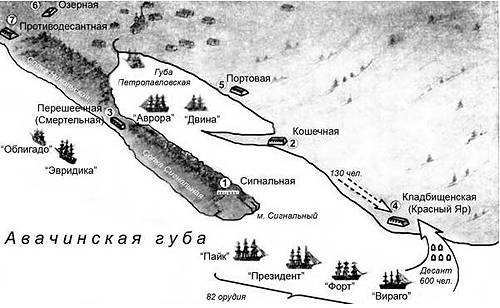
Battle. First assault
16 (28) On August 1854, an enemy squadron led by Rear Admirals David Price and Auguste Febvrier-Despouant appeared at Petropavlovsk. Its structure included: the British 52-gun frigate "President", 44-gun frigate "Pike", the "Virago" steamer armed with 6 bombing guns; French 60-gun frigate "Fort", 32-gun frigate "Eurydice", 18-gun brig "Obligado". The personnel of the squadron totaled 2,7 thousand people (2,2 thousand people - crews of ships, 500 people - marines). The squadron was armed with over 210 guns.
The Westerners conducted reconnaissance with the help of the steamboat Virago and found that the surprise attack did not work, that the Russians had coastal batteries and two ships. This seriously complicated the situation. The Anglo-French squadron did not have the ability to break through a strong defense. In particular, the British ships were armed mainly short-barrel carronades, poorly adapted to deal with coastal fortifications. In addition, the Anglo-French squadron missed the opportunity to intercept the Aurora and the Dvina, the appearance of which greatly strengthened the defense of Petropavlovsk. This greatly depressed the allies, who were preparing for an “easy walk” to capture the Russian port, which was almost not protected.
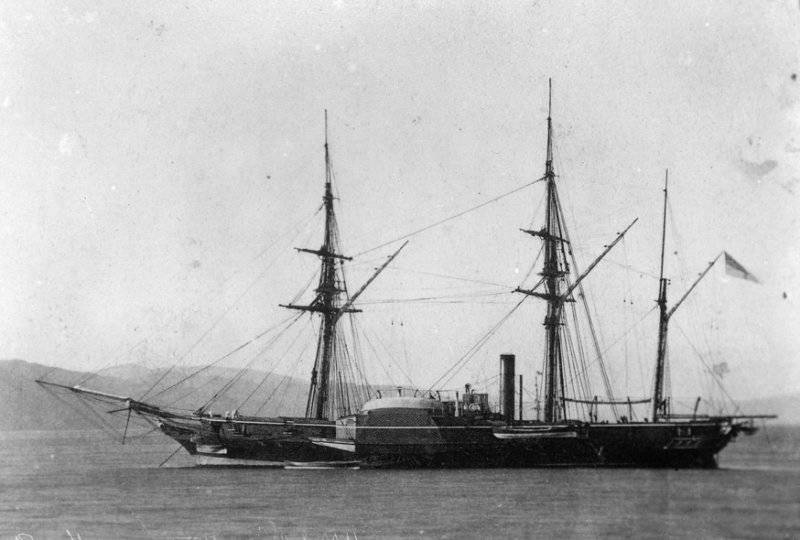
On 18 (30) on August 1854, allied ships entered Avacha Bay and fired several shots, the Russians answered. Soon, the Allies stopped shooting, that was all over. The Russian garrison expected that the next day the enemy would launch a decisive attack, but it did not follow. It was the unexpected death of the British commander - Rear Admiral Price (he was an experienced and brave commander who went from a young man to the commander of the Pacific squadron). Indeed, in the evening of 30 on August evening, the Allied command held a meeting and adopted an attack plan: the destruction of the 1 and 4 batteries by ship fire, entry into the harbor and the suppression of the 2 battery, Russian ships, and the landing for the capture of the city. On August 31, the Allied fleet began to move, but then suddenly stopped and returned to its original position. The English admiral died under mysterious circumstances. According to the official version - due to a mistake in handling the gun (shot himself). This mysterious death was a kind of omen for the entire western squadron.
The command was led by French Rear Admiral Despoint (de Pointe). He did not change the plan of the offensive. After the first hitch, the allied squadron moved to Petropavlovsk and carried out reconnaissance in battle. The Allies fired on batteries No. 1 and 2). The shootout ended in the evening. In the morning of August 20 (September 1) of the 1854 of the year, the western squadron launched a decisive assault. The British and the French frigate Fort fired on advanced batteries (No. 1, 4 and 2), the French fired on the No. 3 battery, trying to divert attention to themselves. Also, the French ships Obligado and Evredika fired from across the Nikolskaya Sopka, trying to get into Russian ships.
The strongest blow came in the “Signal” battery, where the Russian commander Zavoyko himself was. Fire fell on it near 80 guns (three left sides). Western ships, despite stubborn resistance, were able to suppress batteries No. 1 and 4. The guns had to be left, the platforms were bombarded, the machines were killed. The commander of the fourth battery, midshipman Popov, led his men to battery No. 2. Thus, the allies solved the first problem - they shot down the "external castle". However, they could not crush the 2 battery and cause damage to the Aurora and the Dvina.
Then the allies landed an assault force (600 people) at battery number 4. However, almost immediately their enthusiasm went out. The British fired on the shore of their French allies (the so-called "friendly fire"). Russian ships opened fire on the French paratroopers. By order of Zavoyko a counterattack was organized. The sailors of the reserve and volunteers went into battle. There were about 130 fighters in the squad. They were led by midshipmen Fesun, Mikhailov, Popov and lieutenant Gubarev. Russians went bayonet. However, the French did not accept the battle, although they had significant numerical superiority, boarded boats and fled to their ships. A whole battalion fled in front of the national company.
Meanwhile, the “Cat” battery under the command of Lieutenant Dmitry Maksutov continued to engage in battle with enemy ships. The battle lasted until 6 hours of the evening. The Westerners could not suppress Maksutov’s battery. On this battle ended. The Anglo-French squadron returned to its position at the entrance to the bay. The Russians repelled the first attack.
The Russians expected that the next day, the enemy who destroyed the advanced batteries would undoubtedly attack again. Zavoiko visited the Aurora and told the sailors that now it’s worth waiting for a decisive attack on the frigate, which is on its way to the port. The Russian sailors answered as one: “We will die, but not surrender!”
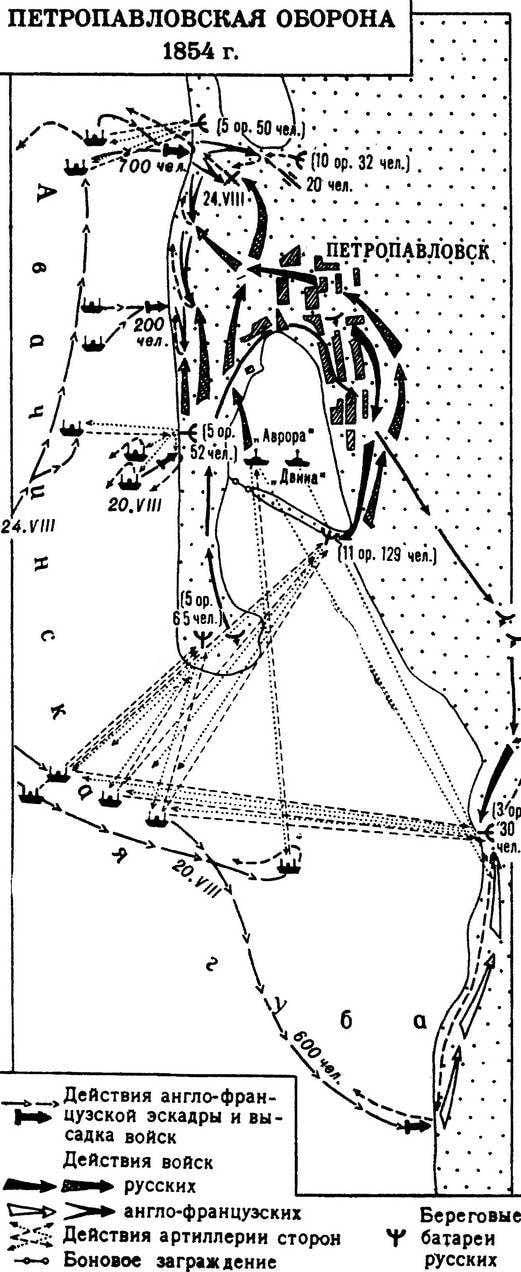
The second assault and evacuation
The Allies hesitated, until 24 of August (5 of September) of 1854, they repaired the damage on the ships and prepared for a new assault. The Anglo-French command adopted a new attack plan: now the main blow fell on batteries No. 3 and 7. Here the most powerful ships fired - the “President” and “Fort”, the steamboat “Virago”. Other ships defiantly attacked, as before, batteries No. 1 and 4 (they were restored by the Russians). Here the allies imitated the first assault, showing that the plan of attack was the same. Later, the frigates Pike and Eurydice joined the main forces.
Thus, the Allied squadron had here at first 118 guns, and then 194, against 10 Russian guns. So, five guns of the “Isthmusic” battery under the command of Lieutenant Alexander Maksutov (he was mortally wounded in this battle) fought a deadly duel with the 60-gun frigate “Fort”. The salvo of each side of the French frigate was equal to 30 guns. As Midshipman Fesun recalled, the entire isthmus is completely torn, there was no arshin of land where the core would not have got. At the same time, the Russian gunners in the beginning successfully answered: the enemy frigate received serious damage. After a three-hour battle, the enemy ships crushed the Russian batteries. The guns were damaged, half of the battery garrisons were interrupted, the remaining gunners were forced to withdraw. After the battle, the battery No. 3 was called "Deadly", as it was poorly covered by parapet and its garrison suffered heavy losses.
The Anglo-French squadron landed two landings: the first at battery number 3 - about 250 people, and the second at battery number 7 - 700 paratroopers. The Westerners planned to climb the Nikolskaya Sopka and immediately seize the port. Part of the force was allocated to capture battery No. 6, then to attack the city from the side of Kultushnoe lake. However, the “Ozernaya” battery No. 6 with several shots fired buckshot drove off the enemy. The Anglo-French landing party retreated to Nikolskaya Sopka, from where it was going to attack the city. About 1 thousand people were concentrated here. The Russian commander Zavoyko did not wait for an enemy strike, gathered all possible forces and answered with a furious counterattack. The Russian detachment consisted of about 350 people (soldiers, sailors and townspeople), advancing in several separate parties and up the hill.
Russian groups of 30-40 fighters led by Lieutenant Angudinov, Midshipman Mikhailov, Lieutenant Gubarev and other commanders rose to heights under enemy fire. Russian soldiers performed another miracle. The Westerners did not survive the Russian bayonet battle and fled. Moreover, as Fesun recalled, the flight "is the most erratic, and driven by some special panic fear." Part of the British and French ran to a cliff that overlooked the sea, jumped from great heights and crippled. It was not possible to support the landing with naval fire. The Russians occupied the heights and fired at the retreating enemy. As a result, the remnants of the landing escaped to the ships. At the same time, the Allies showed great courage in the removal of their dead and wounded.
Thus, the second assault ended in complete failure for the Allies, despite the initial success - the suppression of batteries No. 3 and 7, and a brilliant victory for the Russians. Anglo-French forces could not use superiority in artillery and manpower. Russian morale compensated for the lack of strength and brought victory to the heroic Peter and Paul garrison. In this battle, the Allies lost about 400 people killed, 150 wounded and 4 prisoners. Russian losses - 34 person. For all the time of the battle, the Russians lost over 100 people, the losses of the allies are unknown.
After a two-day lull, the allied squadron, not daring to continue the battle, retreated. The news of this victory reached the capital four months later and became a "ray of light" that broke through the dark clouds of failures on the main front in Crimea. At the same time, it was obvious that the Allies would gather a more powerful squadron and return to Petropavlovsk. There were no opportunities to strengthen the port's defenses. Therefore, Zavoiko was ordered to liquidate the city and move to the Amur. The city was dismantled literally on a log, some of the things were loaded onto ships (the frigate Aurora, a corvette, three transports and a boat), and some were hidden. The evacuation took place in May 1855 literally under the nose of the Anglo-French fleet. On May 8 (20), 1855, the Anglo-French fleet (9 English and 5 French ships) entered Avacha Bay. But the place was now uninhabitable and the allies were gone. And Zavoiko's squadron successfully climbed up the Amur and in two months built a new port city of Nikolaevsk.
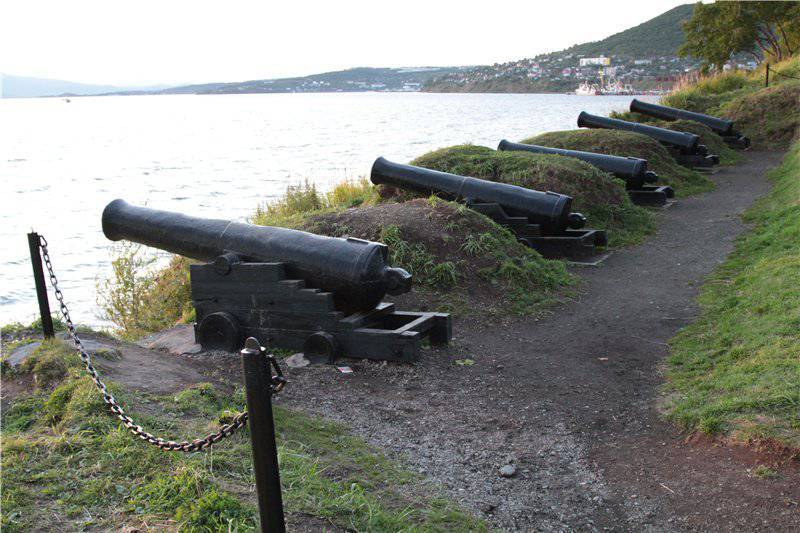
Information